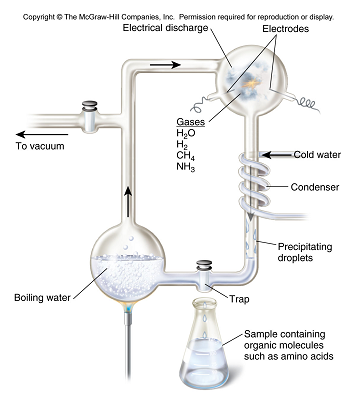Sugars are formed in the chloroplasts ____
a. on the outer membrane
b. on the inner membrane
c. in the thylakoid compartment
d. in the stroma
e. within the thylakoid membrane
ANSWER: d
You might also like to view...
Conservationists have identified 25 areas worldwide as hotspots. This means these areas
A. are currently being preserved. B. have serious pollution problems and are being targeted for cleanup. C. have high numbers of endemic species, and those numbers are increasing. D. have high numbers of endemic species, and those numbers are decreasing. E. have the highest numbers of invasive species worldwide.
Many spirochetes are difficult to cultivate, so their classification is based on their
A. morphology and ability to cause disease. B. number of flagella. C. pattern of pili. D. number of chromosomes.
The Miller and Urey apparatus produced hydrogen cyanide (HCN), formaldehyde (CH2O), and glycine (an amino acid) in their first experiment, why was it important that they use water vapor, methane, carbon monoxide, ammonia and hydrogen as their reactants and an electrical spark as their energy source?

A. They knew these reactants were available in their lab and in today's atmosphere.
B. These reactants were found in today's atmosphere therefore they should be used to try to replicate the early Earth atmosphere.
C. Each of the reactants were readily changed into proteins and DNA.
D. These reactants were useful because their products were able to be predicted before the experiment began, it is always good to know the outcome of an experiment to achieve success with the experiment.
E. These reactants were hypothesized to have made up the early Earth atmosphere, the electricity was used to emulate lightening strikes.
Suppose a new form of DNA polymerase III is discovered that does not require a primer to begin synthesis of a new strand. All other properties of the enzyme remain unchanged. If this new enzyme were to be expressed in the same organism that normally expresses DNA polymerase III, what would no longer be necessary to completely replicate all of the cellular DNA?
A. DNA helicase B. telomerase C. DNA polymerase I D. DNA ligase E. single strand-binding protein